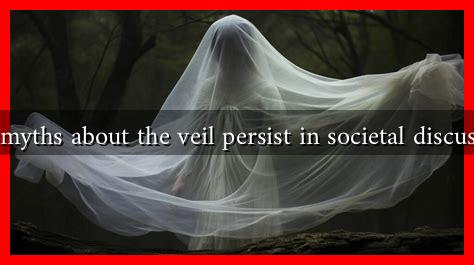-
Table of Contents
What Myths About the Veil Persist in Societal Discussions?
The veil, often associated with Muslim women, has been a topic of heated debate and discussion in various societies. Misunderstandings and stereotypes surrounding the veil have led to the perpetuation of several myths. This article aims to explore these myths, debunk them, and provide a clearer understanding of the cultural and religious significance of the veil.
Myth 1: The Veil is a Symbol of Oppression
One of the most prevalent myths is that the veil is inherently a symbol of oppression. This perspective often stems from a Western viewpoint that equates the veil with a lack of freedom and autonomy for women. However, this narrative overlooks the diverse reasons why women choose to wear the veil.
- Personal Choice: Many women wear the veil as an expression of their faith and identity. For instance, a study by the Pew Research Center found that 62% of Muslim women in the U.S. wear the hijab by choice, emphasizing their autonomy in making this decision.
- Cultural Significance: In many cultures, the veil is a traditional garment that signifies cultural heritage rather than oppression. For example, in countries like Morocco and Egypt, the veil is often worn as a part of cultural identity.
Myth 2: All Veils are the Same
Another common misconception is that all veils are identical and serve the same purpose. In reality, there is a wide variety of veils, each with its own cultural and religious significance.
- Types of Veils: The hijab, niqab, and burqa are just a few examples of different types of veils. Each has distinct meanings and practices associated with it. For instance, the hijab covers the hair and neck but leaves the face visible, while the niqab covers the face, leaving only the eyes exposed.
- Regional Variations: The style and significance of the veil can vary significantly from one region to another. In Indonesia, for example, the hijab is often worn in vibrant colors and patterns, reflecting local customs and fashion trends.
Myth 3: Veiled Women are Uneducated
There is a stereotype that women who wear the veil are uneducated or lack professional aspirations. This myth is not only unfounded but also harmful, as it perpetuates discrimination against veiled women in educational and professional settings.
- Educational Attainment: Research indicates that many veiled women are highly educated. A report by the Institute for Social Policy and Understanding found that 60% of Muslim women in the U.S. hold a college degree or higher.
- Professional Success: Numerous veiled women have excelled in various fields, including politics, science, and the arts. For example, Ilhan Omar, a U.S. Congresswoman, wears a hijab and has made significant contributions to American politics.
Myth 4: The Veil is a Monolithic Practice
Many people assume that the practice of wearing the veil is uniform across all Muslim communities. However, the reality is that the decision to wear a veil is influenced by a multitude of factors, including personal beliefs, family traditions, and societal norms.
- Diverse Interpretations: Different Islamic scholars and communities interpret the teachings of Islam in various ways, leading to differing practices regarding the veil.
- Generational Differences: Younger generations of Muslim women may choose to wear the veil differently than their mothers or grandmothers, reflecting changing attitudes and cultural influences.
Conclusion: Understanding the Veil Beyond Myths
In conclusion, the myths surrounding the veil often stem from a lack of understanding and exposure to the diverse experiences of veiled women. By recognizing that the veil can be a symbol of personal choice, cultural identity, and empowerment, society can move towards a more nuanced and respectful dialogue about this topic. It is essential to challenge these myths and promote a deeper understanding of the veil’s significance in various contexts. As we continue to engage in discussions about the veil, let us strive for empathy and awareness, recognizing the individuality of each woman’s choice.
For further reading on the topic, you can explore resources from the Pew Research Center and the Institute for Social Policy and Understanding.

